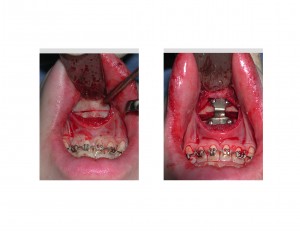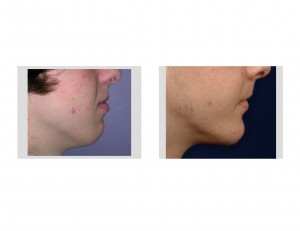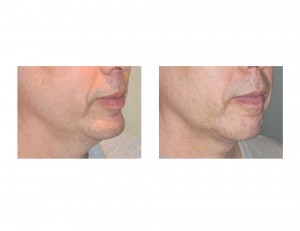

Reverting the chin back to its original preoperative position, or to just make it less advanced or lengthened, can be done through a reversal sliding genioplasty procedure. This is merely repositioning the chin bone by making a new osteotomy cut. But in considering to do so, it is important to look at the type of indwelling fixation hardware used (by x-ray) and what soft tissue impact may ensue. These factors along with how likely the aesthetic outcome may be achieved will determine whether a reversal sliding genioplasty is worth it.
Case Study: This 52 year-old male had a sliding genioplasty done seven years ago as part of a mandibular osteotomy to fix a malocclusion. He never really liked how it changed his chin and he had numerous persistent soft tissue symptoms from it including a tight chin and a lower lip sag from it. In addition, he could feel the notch in the jawline at the back end of the original osteotomy lines were the cuts went through the inferior border. After much thought he finally decided to have it reversed.

A reversal sliding genioplasty is performed similarly to the original advancement. Preoperative attention needs to be paid to what type of original bone fixation hardware was used to ensure it will not be problematic to remove or is in the way of the new osteotomy cut. Since the chin tissues are stretched forward what happens to the attached soft tissues along the jawline and in the central neck needs to be considered.
Case Highlights:
1) A sliding genioplasty is one method of chin augmentation that creates a natural effect by moving the chin bone below the level of the front teeth.
2) While a bony genioplasty usually leads to a significant chin augmentation effect and a satisfied patient, some can find the effect too much and may yearn for a return to their former self.
3) A sliding genioplasty can be reversed months to years later by recutting the original osteotomy line and setting/sliding the bone back.
Dr. Barry Eppley
Indianapolis, Indiana


